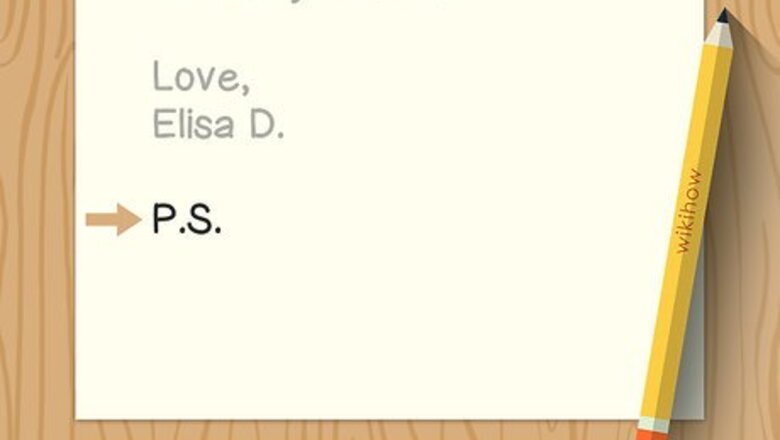
views
Formatting a PS
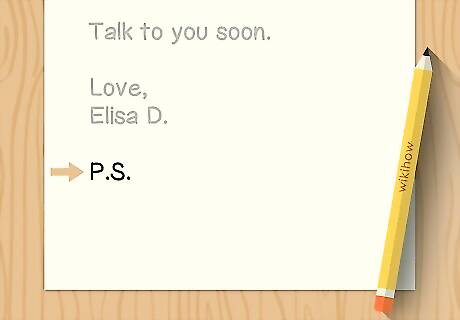
Place the postscript after your signature. Originally, PS’s, or postscripts, were used to add extra information after the author had already signed their name. Following that tradition, PS belongs below or next to your signature to convey the nature of an afterthought.
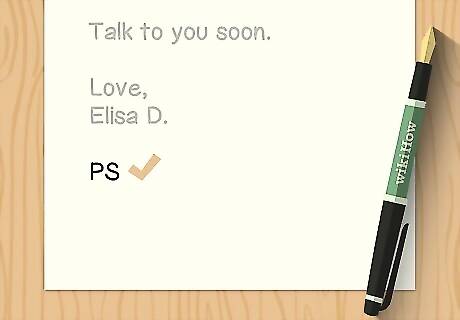
Consistently write postscript as either “PS” or “P.S.” The two forms of abbreviating postscript are relatively interchangeable—“PS” IS more common in UK English and “P.S.” is more common in US English. Choose whichever one looks best to you, and use it consistently across your letters and emails. It may seem a little strange, but don’t put a comma after PS or P.S. Both can stand alone or be followed by a colon. Use “PS” if you’re using the Chicago Manual of Style.
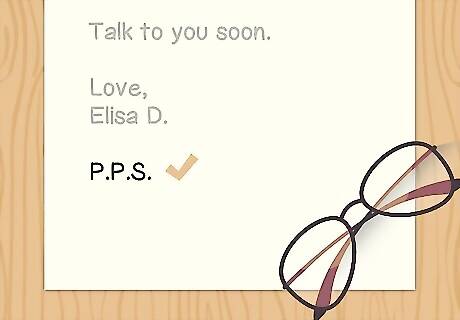
Add more postscripts by adding a ‘P’ to “PS.” The “post” in “postscript” means ‘after’ in Latin (and “script” means ‘writing’), and so when you add another ‘P’ to a “PS,” you’re writing an “after-after-writing.” PPS (and PPPs and PPPPS) is best used in informal correspondence to add a little bit of humor or cheekiness. Note that contrary to common usage, the next level past PS is not “PSS.”, which would mean “after-writing-writing”.
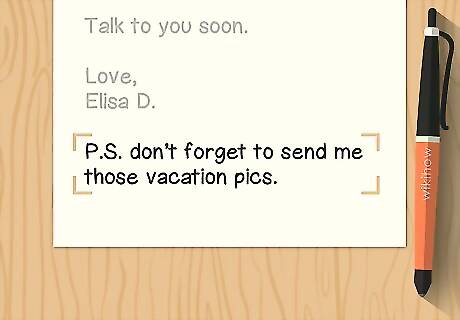
Keep your postscripts under 4-5 lines long in professional letters. A long PS can make a professional letter seem disorganized. If you write a PS and it ends up being more than a paragraph, consider sending that information in a separate message or redrafting the letter and adding it to the body. In a personal message, a long PS simply suggests that you remembered something else you wanted to mention. Feel free to include an entirely new story in a PS to a friend or loved one. If the body of the message is only a few sentences long, a PS can seem a little out of place. If you’re writing a brief note, leave out the postscript (unless you’re using it for humor/familiarity).
Using a P.S. in a Business Message
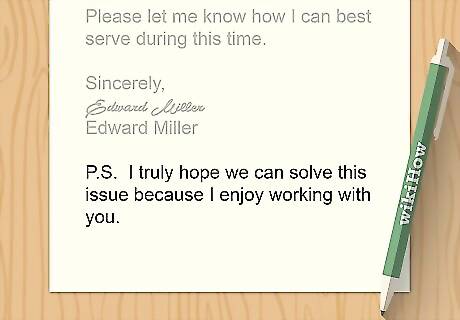
Create a more relaxed tone with PS. Since the PS is seen as a familiar writing device, adding a kind message can create a feeling of a better connection between you and your boss, employees, or coworkers. For instance, a message about correcting a minor error can be softened with an appreciative PS. “Please be mindful to not leave the printer on once you’re done using it. PS: I really appreciate all the work you’ve been doing on the filing system, you’re a lifesaver.” “PS Everything else you’ve done has been great, keep up the good work!” You can also add the PS to connect a little more with your employees or colleagues: “PS: You’ve been doing a great job—I can’t believe you only started last month!” Be careful not to accidentally create a sarcastic tone. If your message is stern or assertive, a kind PS can feel like a mocking joke or a slight directed at the recipient.
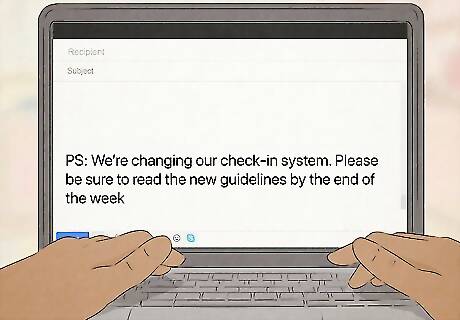
Reiterate an important point with the PS. PS’s work through the recency effect: the easiest thing to remember is the last thing you read. Bring up your most important point (plus a little extra emphasis) in the PS so people leave your email with your message firmly in mind. “PS: We’re changing our check-in system. Please be sure to read the new guidelines by the end of the week.” “PS Quarterly reviews are coming up next week, remember to submit all of your hours by this Wednesday.”
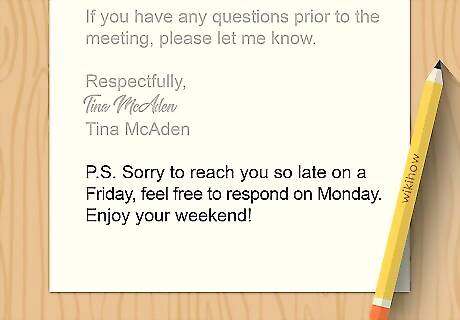
Comment on the message itself with a PS. If you’re sending the message at an odd hour, or you feel like you meandered to get to your point, adding a PS that comments on the situation establishes that you are aware of how it comes off. For example, saying “PS Sorry to reach you so late on a Friday, feel free to respond on Monday. Enjoy your weekend!” can help alleviate any tension that could have come from the situation.
Deploying a PS as a Marketing Tool
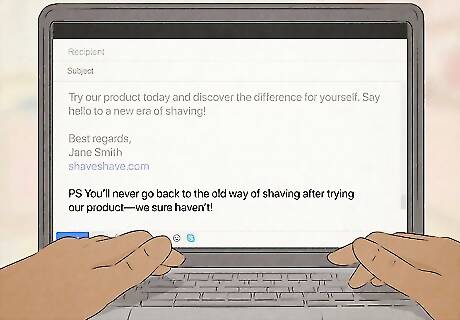
Add an attention-grabbing pitch in a PS. Since the internet can flood inboxes with media, people often only read the first and last lines of their marketing emails. If you’re writing marketing emails, start with a strong hook, then reel them back in with the PS. "PS Our 50% offer lasts all month!" "PS You’ll never go back to the old way of shaving after trying our product—we sure haven’t!" Don’t rely on the PS to hook readers. Make your opening strong as well.

Remind your readers of a time-sensitive deadline. Use the postscript to outline the exact details of your offer. If your reader starts with the postscript, they instantly understand the urgency, and if they read the whole email, it just emphasizes the deadline for them. “PS: Our pop-up shop opens next Friday at 45 Main St! Get there soon, the store closes when we run out of stock!” “PS If you switch internet services now, we’ll give you a month free, on us! Just sign up before October 31st!”

Add extra incentives with a postscript. You can use a PS to describe a bonus that might hook a potential customer, like a discount, a buy-one-get-one offer, or a free gift. Add a link to the PS to further encourage them to buy into the deal. “PS: Use code newcust265 for an extra 30% off of your next purchase.” “PS: Click the link to claim your 30 day free trial!”
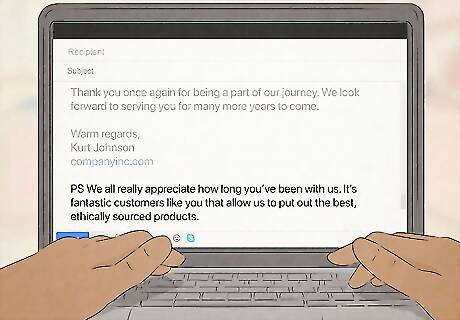
Make your postscript personal. Adding a personal touch, such as a name or a special offer for “great customers like you” can draw the reader in and encourage them to see what the rest of the message is about. While personal greetings are common, your reader may not expect a personal PS. “PS We all really appreciate how long you’ve been with us. It’s fantastic customers like you that allow us to put out the best, ethically sourced products.” “PS We couldn’t do this without your support! Your commitment to our cause is the backbone of everything we do.”
Writing a PS in a Personal Note
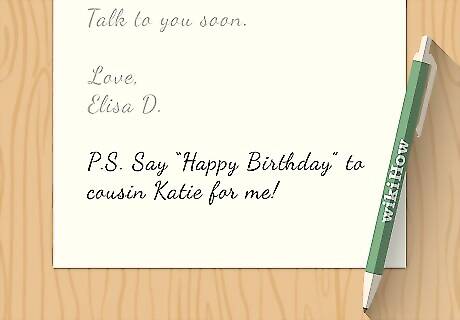
Add a tangent or new thought after PS. Use PS as a way to provide a separate comment that’s unrelated or only barely related to the body of the letter. In this case, a PS is almost like saying “by the way.” “PS Say “Happy Birthday” to cousin Katie for me!” “PS: Did you finally start watching that show I told you about?”

Use a postscript to play around or add a joke. Once called “the wink you give as you walk away,” a postscript allows you to make a witty remark or funny detail you may have left out earlier in the message. If you want to include an inside joke between you and the recipient, you can use a PS. The familiar nature of the postscript means it is a good place to include funny, slightly sarcastic comments, e.g., “PS Still haven’t heard whether you want me to purchase the Eiffel Tower for you…” or “PS Let me know how Paris looks on a warm summer evening. I heard it’s pretty terrible.”
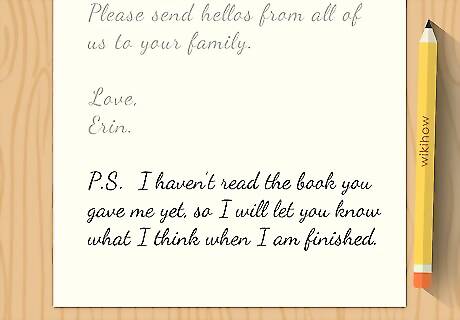
Reply to a previous comment using PS. If your message is a response to someone else’s correspondence with you, a PS is a good way to reply to something mentioned in their note that doesn’t quite fit in with the body of the message. “PS I haven’t read the book you gave me yet, so I will let you know what I think when I’m finished.” “PS I’m not giving your hoodie back until you finally come visit me—so stop asking.”
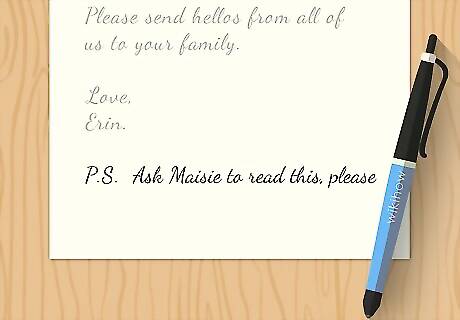
Mention the message itself in the PS. If you want to comment on how long your letter or email is, the PS is a good place to do it. You can also include remarks about who you want to read the message in a postscript. “PS Ask Maisie to read this, please,” for instance, doesn’t feel out of place after a letter, but could cause confusion in the middle or at the beginning.



















Comments
0 comment